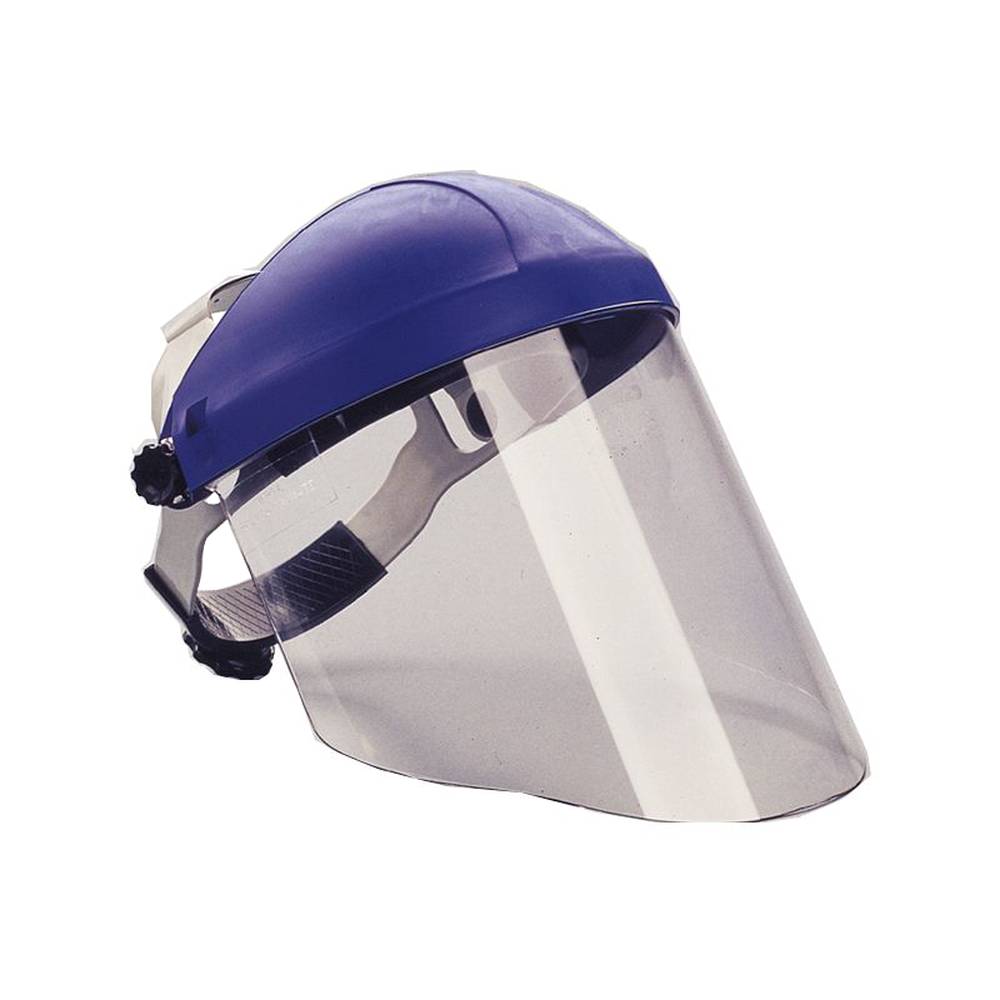Our eyes are fragile, even vulnerable, when faced with a projectile or a splash of chemical liquid. It is therefore important to protect them adequately. The impact of projectiles or chemical liquids on the face can cause permanent aftereffects. Blindness or scars on faces dramatically change the lives of those injured in the workplace. These aftereffects will have a direct impact on their quality of life.
Do you have workers who are prone to eye injuries? Are the tasks you entrust to them particularly dangerous for their eyes?
In order to ensure safe handling of chemical products, when they are segregated, workers must always wear a tracksuit (lab coat) or other type of clothing. It is not uncommon that they must also wear gloves, safety glasses and respirators.
There is a wide range of safety glasses on the market. The choice of models should be related to the risks to which workers are exposed.
Safety glasses mainly offer protection against mechanical hazards. The characteristics generally sought for safety glasses are lightness and ergonomics. Other characteristics may also apply to certain models such as: anti-scratch, anti-fog, adjustable temples, lenses with or without anti-fog coating. The final choice of eyewear model varies according to your needs and the environment in which your workers work.
As you can see, there are multiple risks. There are, of course, the mechanical risks, those generated during machining operations where particles are projected. Since these particles often move at high speeds, it is easy to conceive of possible damage to the eyes.
There are risks of injury caused by:
– The projection of particles
– Shrapnel of all kinds
– The projection of liquid under pressure
There are biological or chemical hazards. These types of risks are frequently found in the medical environment. The same is true in the agri-food sector, or in the field of waste residue management. Here, workers are in the presence of microorganisms.
There are also risks of injury in the presence of:
– Dust;
– Aerosol
– Brouillards
– Liquid jets
– Gas
– Vapours
The use and/or handling of chemicals may involve certain risks. Personnel using or handling chemicals must wear the following protective equipment:
(a) Safety glasses with sides at all times
(b) a visor and goggles during pumping operations (industrial cleaning work) or decanting operations.
PVC suit according to product
(d) PVC gloves.
e) respiratory protection according to the nature of the product
There are also risks related to optical radiation.
There are risks of damaging your eyes in the presence of radiation:
– Ultraviolet
– Infrared
– Laser
– Solar radiation
– Welding
Radiation hazards are often found in steel mills or manufacturing plants where welding is part of the assembly process. Unfortunately, the risk of burns and eye damage is not uncommon.
There are also thermal risks caused by this:
– Radiant heat
– Spraying of molten metals
Take for example the workers who work near ovens.
There is also the risk of electric arcing.
There are risks of: Short circuit electric arc.
There is no risk of particle splashes or UV radiation in these tasks. Nevertheless, it seems quite obvious that you must be familiar with the configuration of each of the workstations in your company before offering anything to your workers as visual protection.
Regardless of the type of hazard you will be controlling, it is important to clearly define the type of tools you will be using and to be familiar with the type and size of dust you will be dealing with.
If it’s heat, understand very well the type of heat and what it can produce on your workers. Especially if you have to work with chemical or biological products. If possible, consult the manufacturers’ Material Safety Data Sheets (MSDS) for these chemicals. When it comes to radiation, it is mandatory that you are familiar with the wavelengths and nature of radiation sources. The same applies to all chemicals.
If the workplace is very dusty, safety glasses must not only be approved, but above all they must prevent or even limit the dust from entering with the eyes. For general work, safety goggles must be worn at all times. In case of acid products do not skimp on the type of glasses. You will need goggles.
Always use equipment and materials designed to withstand the products being used or handled. Check the location of emergency showers or other water sources if, in the event of skin contact, the chemical used or handled requires immediate flushing.
Recalls the regulations in force in Quebec.
The Regulation respecting Occupational Health and Safety (R.S.S.T.) and V.T.T.
286. Conditions of use: The use of an all-terrain vehicle is permitted only under the following conditions:
(…)
5° the driver must wear the following personal protective equipment:
(a) a helmet for motorcyclists and snowmobilers
b) Complies with Helmets Regulations (Chapter C-24.2, r. 6) ;
(c) Protective goggles or a visor designed to be added to the helmet;
Sylprotec offers all protective equipment available on the market.
Glasses with temples and side shields



You can find other models of goggles and face protection as well as safety equipment at Sylprotec. You can buy online or at their Saint-Leonard’s store. You’ll find a wide range of gloves, eyewash bottles, eyewash fountains, first-aid posters and more.
Sylvain Patrice t.p. i.
By the same author:
Hearing protection for workers.
Steps for performing an inspection on portable fire extinguishers.
Emergency lighting the principles of operation.
Signage in an industrial environment.
Posters in industrial settings in Canada.
The safety helmet is an indispensable piece of protective equipment.
